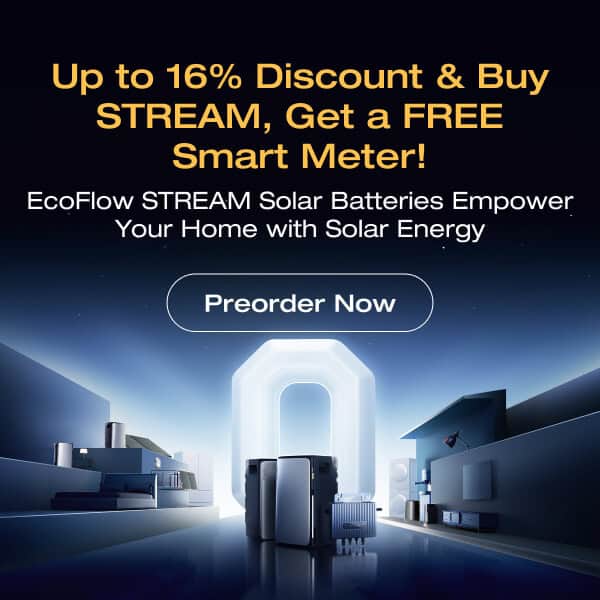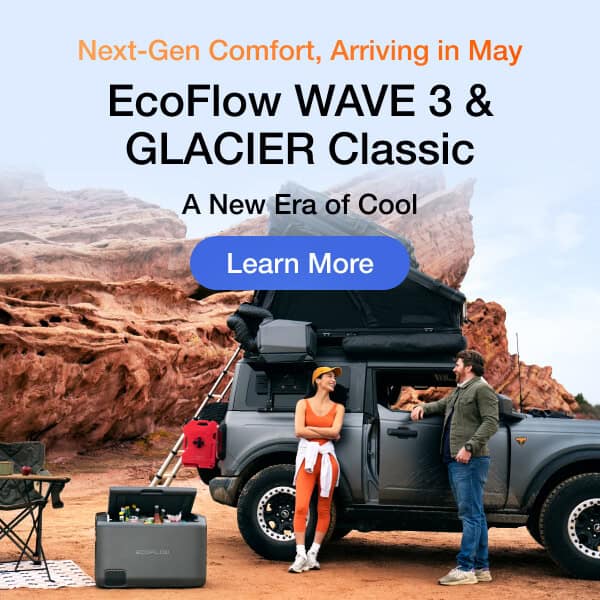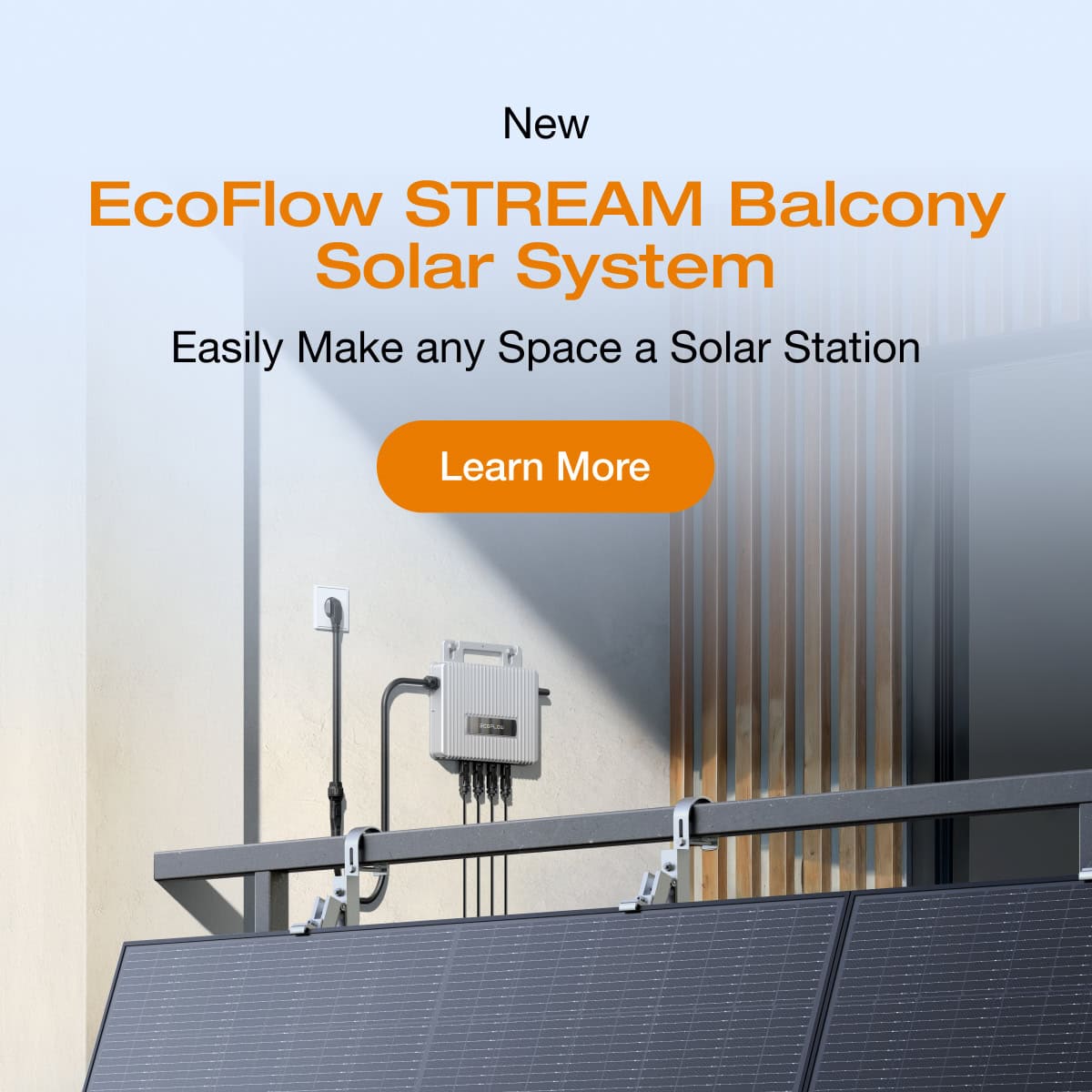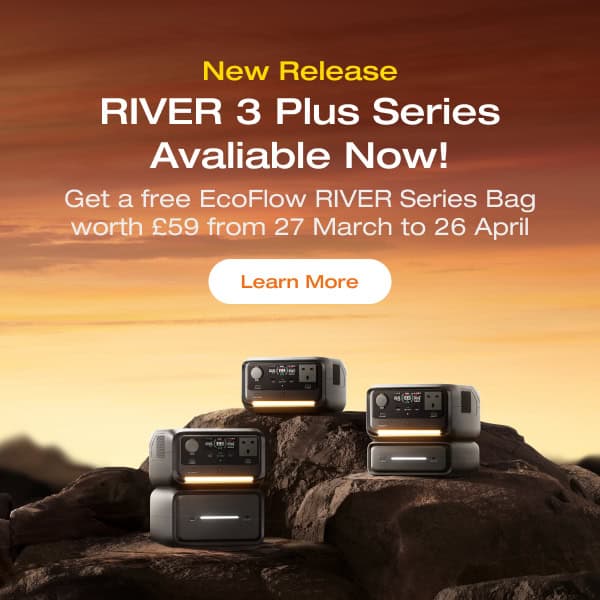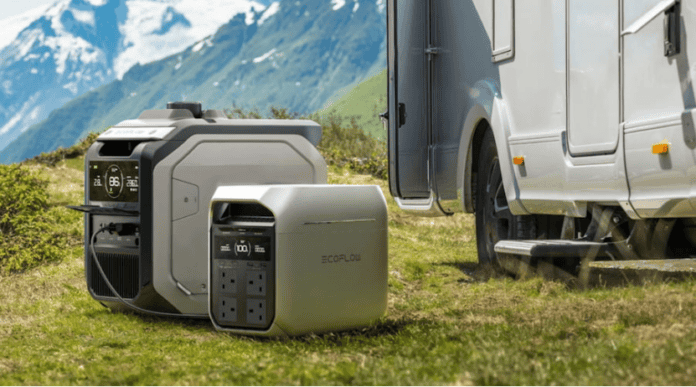Table of Contents
Planning a road trip, a weekend in your caravan, or a few days off-grid? Then you’ll need a reliable leisure battery to keep your lights on, your fridge running, and your devices charged. But with so many options out there, how do you know which one is right for you?
That’s where this guide comes in. We’ll break down the different types of leisure batteries, share 5 best leisure battery picks in 2025, and give you some handy tips on choosing and maintaining the right one. Let’s make sure you stay powered up on your next adventure!
Types of Leisure Batteries
Leisure batteries are essential for powering appliances in caravans, motorhomes, and boats, providing reliable energy where mains electricity is unavailable. Unlike car batteries, they are designed for sustained power delivery (deep cycling). Below is an overview of the main types by chemistry:
Lead-Acid Leisure Batteries: The Classic Choice
These are the most common type of leisure batteries and have been around for ages. They’re budget-friendly and come in flooded (wet cell) and sealed (AGM or Gel) options.
- Flooded (Wet Cell) Batteries: These contain liquid electrolyte and require regular maintenance, such as topping up with distilled water. They are cost-effective but must be installed upright to prevent spills.
- Absorbent Glass Mat (AGM) Batteries: AGM batteries use a fiberglass mat to absorb the electrolyte, making them sealed and maintenance-free. They are resistant to vibration and can handle faster charging and deeper discharges compared to flooded batteries.
- Gel Batteries: In these batteries, electrolyte are suspended in silica gel, creating a sealed, spill-proof design. They perform well in extreme temperatures, offer a longer lifespan, but come at a higher cost.
Lead-acid leisure batteries typically last 3-8 years. They’re best for casual users who don’t mind a bit of maintenance. If you only use your caravan or boat occasionally, these could be a good, budget-friendly option.
Lithium-Ion Batteries: The Modern Option
Lithium leisure batteries, especially LiFePO4 (Lithium Iron Phosphate) batteries, are considered the best option for modern off-grid power needs. They are lighter, more efficient, and longer-lasting than traditional lead-acid batteries.
EcoFlow batteries, for example, are all high-quality LiFePO4 batteries. By choosing a LiFePO4 leisure battery, you can enjoy:
- Longer lifespan: LiFePO4 batteries can last 10+ years and handle thousands of charge cycles.
- Faster charging: They charge significantly quicker than lead-acid batteries.
- Higher efficiency: You can use up to 90% or more of their capacity without damaging them, unlike lead-acid batteries, which should only be discharged to about 50%.
- Lightweight: Perfect for campervans, motorhomes, and boats where weight matters.
- Safety: They are designed to prevent overheating and are less prone to catching fire, enhancing safety during use.
- Low Maintenance: LiFePO4 batteries require no upkeep, allowing you to focus on your activities without worrying about battery maintenance.
Although more expensive, LiFePO4 leisure batteries can really pay off for frequent travellers, full-time van lifers, and those seeking a high-performance, low-maintenance power solution.
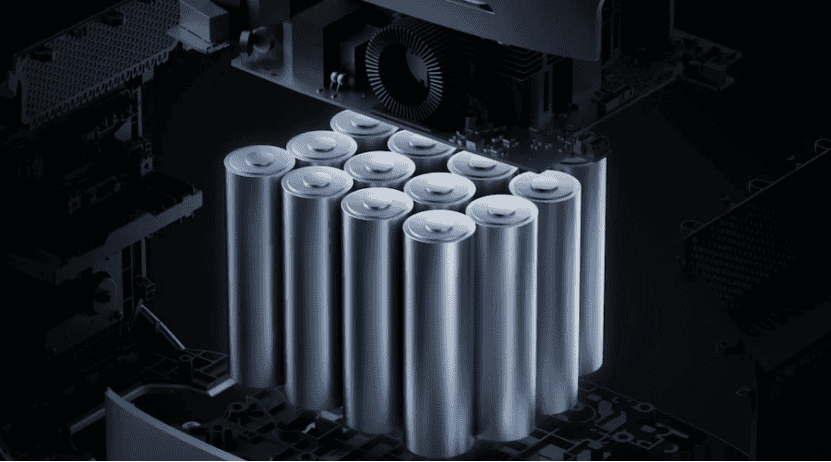
5 Best Leisure Batteries for 2025
With both Lead-acid and LiFePO4 leisure batteries available, selecting the right one depends on your specific needs. Here, we’ve rounded up five of the most recommended leisure batteries for 2025. Let’s take a look:
EcoFlow DELTA 2 Max
The EcoFlow DELTA 2 Max Portable Power Station is a powerhouse designed for serious energy needs. With an expandable capacity from 2kWh to 6kWh, it adapts to your requirements, ensuring you never run out of power.
Thanks to its LiFePO4 battery chemistry, the DELTA 2 Max is built to last 10 years of daily use before hitting 80% capacity. With 3100W output power, it can handle 99% of home appliances and 13 devices at once, making it one of the most versatile options on the market.
Plus, it features X-Stream fast charging technology, getting you back to full power in as little as 2.3 hours with 1000W solar input.
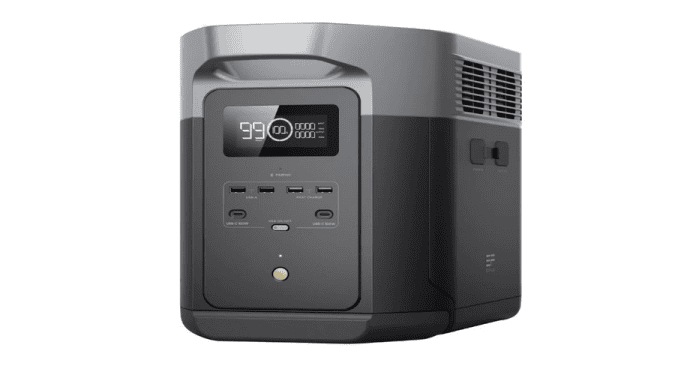
Key Features:
- Expandable Capacity: 2-6kWh with extra battery add-ons.
- Long-Lasting: 10-year lifespan (3,000+ cycles) with LiFePO4 chemistry.
- Powerful Output: X-Boost technology allows up to 3100W output, running 99% of appliances.
- Ultra-Fast Charging: Dual AC and 1000W solar input for charging in as little as 2.3 hours.
- Smart Energy Management: In-app control for prioritizing solar or AC charging, battery monitoring, and usage tracking.
- 5-Year Warranty for long-term peace of mind.
EcoFlow RIVER 3
If you’re looking for a more lightweight and compact battery, the EcoFlow RIVER 3 Portable Power Station is a fantastic option. With a 245Wh capacity and 300W rated output (up to 600W with X-Boost), it’s perfect for running small appliances, charging devices, and keeping essential electronics powered on weekend trips.
Weighing just 3.55 kg, it’s 30% smaller than most, whisper-quiet at under 30 dB, and offers fast charging in just one hour—without causing battery damage. Besides, with IP54 waterproof protection and the ability to power up to 5 devices at once, it’s reliable and ready for anything!
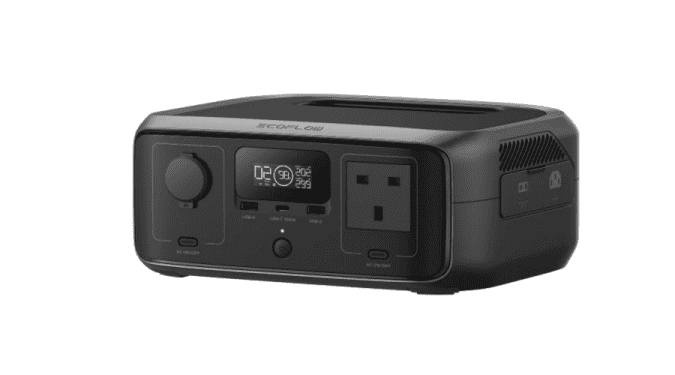
Key Features:
- Compact & Lightweight: 30% smaller than the industry average.
- Fast Charging: Charges in just 1 hour without damaging battery life.
- Quiet Operation: Runs at less than 30dB, making it ideal for overnight use.
- Durable: IP54-rated waterproof battery pack for outdoor resilience.
- Charge Multiple Devices: Power up to 5 appliances at once.
EcoFlow DELTA 3 Series
The EcoFlow DELTA 3 Series Portable Power Station is one of the most versatile and powerful LiFePO4 leisure batteries, offering expandable storage from 1kWh to 5kWh. Whether you need it for a weekend trip or prolonged RV use, this battery has the power to keep you going.
With 1800W AC output (boosting up to 2400W with X-Boost), it can run 99% of household devices—from fridges to laptops, TVs, and even ovens. If you need to power high-wattage appliances, it can handle surges up to 3600W, making it a top choice for those who need reliable energy in any situation.
One of its standout features is its five fast recharging methods, allowing you to recharge via AC, solar panels, alternators, smart generators, or multi-charging. This flexibility ensures you’re never without power, whether you’re at home, in the wilderness, or on the road.
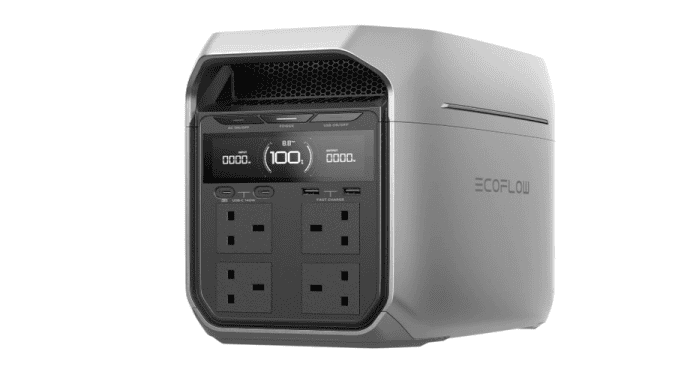
Key Features:
- Expandable Capacity: 1-5kWh with additional battery add-ons.
- High Power Output: 1800W AC output, with X-Boost up to 2400W (3600W surge).
- Versatile Usage: Runs 99% of household devices, including ovens, hairdryers, and kettles.
- Multiple Charging Options: Recharge via AC, solar, alternator, smart generator, or multi-charging.
- Compact & Portable: Designed for easy transportation and storage.
- 11 Outlets: Power multiple appliances simultaneously.
Yuasa L36 AGM
The Yuasa L36 is a durable, NCC Verified Class A AGM battery, ideal for motor movers and frequent off-grid users. Designed for high endurance and fast charging, it offers 400 cycles and 1140Wh of reliable power.
The spill-proof, maintenance-free design ensures hassle-free use, while enhanced safety features, including a flame arrestor and carry handles, make it a dependable choice for caravans and motorhomes.
Key Features:
- Class A NCC Verified AGM Battery: Ideal for high-demand applications.
- Maintenance-free & spill-proof: Hassle-free installation and operation.
- High cycle life: 400 charge cycles for long-term reliability.
- Enhanced safety: Integrated flame arrestor and carry handles.
- 1140Wh capacity: Consistent power for demanding setups.
Renogy 12V 300Ah Core Series
For those needing heavy-duty, all-weather performance, the Renogy 12V 300Ah Core Series is a top-tier LiFePO4 battery with advanced battery management and self-heating technology. Designed to withstand extreme temperatures, its 200W self-heating system ensures safe charging in freezing conditions, making it perfect for winter campers. With its versatile connection options, you can expand the system in series, parallel, or series-parallel configurations, scaling up to 61.44kWh for larger power needs.
Key Features:
- LiFePO4 chemistry: Longer lifespan and superior efficiency.
- 200W self-heating system: Reliable charging in freezing conditions.
- Expandable system: Supports up to 16 batteries for a max 61.44kWh setup.
- 200A BMS protection: Regulates discharge current and prevents overheating.
Factors to Consider When Choosing a Leisure Battery
Picking a leisure battery for caravans or motorhomes is really about finding the right fit for your power needs, budget, and lifestyle. Here are the key factors to keep in mind when making your decision.
Battery Type (Lead-Acid vs. Lithium)
As we’ve learned, when wondering how to choose a leisure battery, the chemistry type you choose affects performance, lifespan, weight, and maintenance.
Lead-Acid Batteries (Flooded, AGM, Gel) are:
- Cheaper upfront but heavier and shorter lifespan.
- Should not be discharged below 50% capacity to avoid damage.
- Require regular maintenance.
Lithium (LiFePO4) Batteries
- Higher upfront cost but last 5-10 times longer than lead-acid.
- Can be discharged up to 95% without damage.
- Lightweight, faster charging, and maintenance-free.
If you use your leisure battery frequently, LiFePO4 is a better long-term investment. If you only go on occasional trips, a good AGM or Gel battery may be enough.
Battery Capacity
Once you decided on the type, the next question you need to tackle is “What size leisure battery do I need?”
The capacity of a leisure battery, measured in amp-hours (Ah) or watt-hours (Wh), determines how long it can power your devices before needing a recharge. The National Caravan Council (NCC) classifies leisure batteries into three categories:
Class A: High-Capacity for Full Off-Grid Use
If you frequently travel off-grid or rely entirely on battery power for extended periods, you’ll need a Class A battery with a large capacity. These batteries are designed to handle high-demand appliances like fridges, microwaves, and heaters without needing frequent recharges.
EcoFlow’s LiFePO4 solar battery offerings, for example, can meet the needs of caravanners who spend most (or all) of their time off-grid. Pairing them with portable solar panels to generate your own green electricity, these portable power stations can provide unlimited off-grid power.
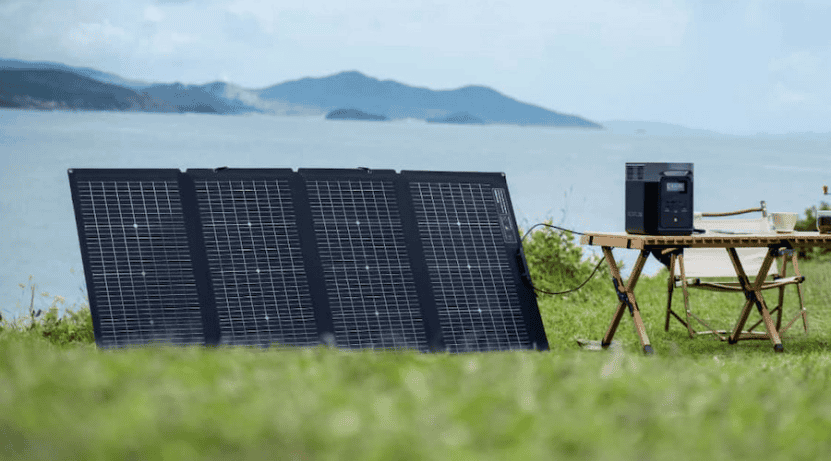
Class B: Mid-Capacity for Occasional Off-Grid Use
If you mostly stay at campsites with electrical hookups but occasionally spend short periods off-grid, a Class B battery is a great choice. For instance, with a capacity of 1,024Wh and a running AC output of 1,800W, the EcoFlow DELTA 2 can power most your essential camping devices, like lights, phone chargers, a mini fridge, and a small TV. And if your power needs increase, you can expand the storage with a Smart Extra Battery (up to 3kWh).
Class C: Low-Capacity for Minimal Power Needs
If you rarely go off-grid and only need a battery to power lights, phone chargers, and small gadgets, a Class C battery like the EcoFlow RIVER 3 (250Wh, 300W output) will be enough. These are the smallest and most affordable leisure batteries, perfect for short trips away from a hook-up.
- Ultimately, to find a leisure battery’s best capacity for your needs, you can add up the wattage of all appliances you’ll use (e.g., phone 11Wmini fridge 50W + lights 10W + laptop 60W = 131W per hour). Pick one with 20-30% more than your estimated needs for reliable performance.
Charging Efficiency & Recharge Time
Not all batteries charge at the same rate, and if you rely on solar panels or a split-charge relay, this becomes a key factor.
- Lead-acid batteries take 8-12 hours to fully charge and need a smart charger to prevent overcharging. AGM and Gel batteries charge slightly faster but still need careful voltage regulation.
- Lithium batteries (LiFePO4) charge up to 5 times faster, making them ideal if you’re frequently on the move.
Best Practices to Maintain Your Leisure Battery
To get the most out of your leisure battery, proper maintenance is key. Follow these best practices to ensure longevity and peak performance:
- Keep It Clean: Regularly check your battery for dirt, dust, or corrosion on terminals. Any build-up should be cleaned to prevent discharge issues and ensure efficient operation.
- Store in a Cool, Dry Place: Extreme temperatures, both hot and cold, can damage your battery, so store it in a well-ventilated area away from direct sunlight or freezing conditions.
- Charge Properly: You should always charge your battery fully before storing it for long periods. Avoid letting it sit at a low charge, as deep discharges can shorten its lifespan.
- Use the Right Connection: Always use the charger designed for your specific battery. Incorrect chargers may cause overcharging or undercharging, damaging the battery over time. Or, if using a solar panel, ensure the connection is secure and the panel is positioned correctly for maximum sunlight.
- Avoid Overcharging: While most modern batteries come with built-in protection, it’s still a good idea to avoid leaving your battery plugged in after it’s fully charged to maintain its lifespan.
Conclusion
Investing in the best leisure battery can make all the difference in ensuring a hassle-free and enjoyable off-grid experience. From understanding the different types to choosing the right model for your setup, it’s important to consider capacity, lifespan, and maintenance requirements. By following best practices for care and upkeep, you can extend the life of your battery and get the most out of your investment. Whether you’re gearing up for a road trip or planning a boating adventure, the right leisure battery will keep your essential appliances running smoothly.
FAQs
What is the best leisure battery on the market?
The best leisure battery depends on your needs, but LiFePO4 batteries are the top choice for performance, lifespan, and efficiency. The EcoFlow DELTA 2 Max is one of the best options in 2025, offering expandable capacity (up to 6kWh), fast charging, and a 10-year lifespan. If you need a more portable option, the EcoFlow RIVER 3 is compact and lightweight, perfect for short trips.
What is the best battery for long-term camping?
The best battery for long-term camping is a LiFePO4 battery, like the EcoFlow DELTA 2 Max or DELTA 3 Series. These batteries last much longer than traditional lead-acid options, offer fast charging, deep discharge capability, and are lightweight for easy transport. They also support solar charging, making them ideal for off-grid camping where you need reliable and sustainable power.
Is a higher Ah leisure battery better?
Not exactly. A higher Ah (amp-hour) rating generally means the battery can store more energy, but it’s important to match this with your power needs and the devices you plan to use.
How long will a 100Ah battery last in a campervan?
A 100Ah 12V battery provides 1200Wh of energy. If your campervan appliances use 100W per hour (e.g., LED lights, phone charging, and a small fridge), the battery will last about 12 hours. LiFePO4 batteries can use nearly 100% of their capacity, while lead-acid batteries should only be discharged to 50%, reducing runtime to around 6 hours.

